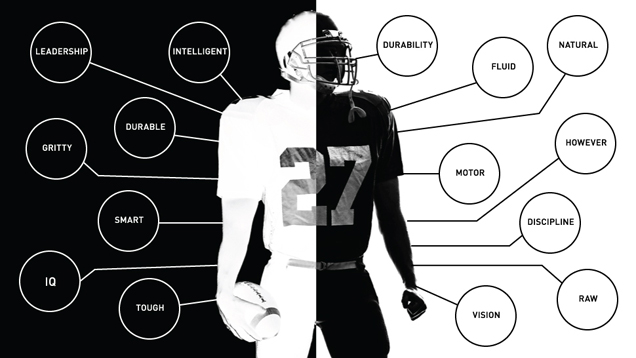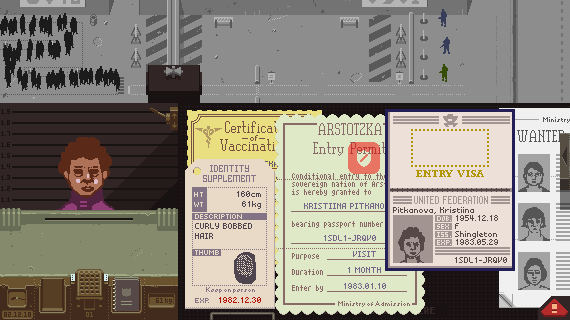From a story in The Asahi Shimbun on Toyota goes manga for ‘Prius! Impossible Girls’ campaign I learned today that Toyota has developed a set of IMPOSSIBLE GIRLS for the different components of the Prius. Check out the site. They have something like 40 manga girl characters for the components of the latest Prius. I must say I find this anthropomorphicization rather tacky. The characters are all young girls that have nothing really to do with cars. What does it say about the Prius that they are pitching it though infantilized manga babes?
Paolo Sordi: I blog therefore I am

On the ethos of digital presence: I participated today in a panel launching the Italian version of Paolo Sordi’s book I Am: Remix Your Web Identity. (The Italian title is Bloggo Con WordPress Dunque Sono.) The panel included people like Domenico Fiormonte, Luisa Capelli, Daniela Guardamangna, Raul Mordenti, and, of course, Paolo Sordi.
Which Words Are Used To Describe White And Black NFL Prospects?
I’ve been meaning to blog this 2014 use of Voyant Tools for some time. Which Words Are Used To Describe White And Black NFL Prospects?. Deadspin did a neat project where they gathered pre-drafting scout reports on black and white football players and then analyzed them with Voyant showing how some words are used more for white or black players.
Continue reading Which Words Are Used To Describe White And Black NFL Prospects?
The Malware Museum
There are a number of stories about The Malware Museum on the Internet Archive. This archive gathers a number of 1980s and 1990s viruses (just the animated parts) with emulators so you can run them and see their visual effects. The Toronto Star story has a quote from Hyponnen on the art of the early viruses,
“You could call it an art form,” he said in an interview. “These early virus-writers were expressing themselves with animations and sounds.”
It wasn’t until later that viruses started encrypting things and blackmailing you to decrypt them or doing other things to make money.
There is an extended talk (50 minutes) by Mikko Hypponen, the security specialist who gave this collection, on The History and the Evolution of Computer Viruses. The talk starts with the first PC virus BRAIN that he traced back to two brothers in Packistan to Stuxnet. (For a good book on Stuxnet see Kim Zetter’s Countdown to Zero Day.)
Big computers, big hair: the women of Bell Labs in the 1960s
The Guardian has posted a set of pictures by Larry Luckham who took a camera into work in 1967 to take pictures of life at Bell Labs, see Big computers, big hair: the women of Bell Labs in the 1960s. That the collection is entirely of women raises some questions. As the Slashdot article post that pointed me to this collection puts it:
What’s noticeable about the pictures, is that they are of woman. I don’t think this is a result of the photographer just photographing “eye candy”. I think it’s because he was surrounded by women, whom from his comments he very much respected and hence photographed.
In those times, wrangling with a computer was very much seen as “clerical work” and therefore the domain of woman. This can be seen as far back as Bletchley Park and before that Ada Lovelace.
Yet 50 years later, the IT industry has turned full-circle. Look at any IT company and the percentage of women doing software development or similar is woeful. Why and how has this happened? Discuss.
Papers, Please
Just finished playing Papers, Please. Very depressing game that tries to give you a sense of what it is like to be a border guard checking things and being watched. It isn’t “fun” but it uses anxiety well. I found myself stressing out as I tried to process enough people to pay for my family and save some money. With discussions in Europe about bringing border controls back to the Schengen Area this sort of control is back “on the map.”
The screen shot shows the simple 8-bit interface. The game has a retro interface to go with the feeling of an Eastern-block country border.
Edoardo Ferrarini on the Digital Humanities in Italy
Edoardo Ferrarini gave a talk yesterday on “Lo statuto disciplinare dell’Informatica umanistica” or “The Status of Humanities Informatics” (with a possible pun on status/statute). Ferrarini works in the area of Latin Literature of the Middle Ages and Humanism at the University of Verona. The talk was interesting and important in three ways:
- First, he gave an Italian history of humanities computing which both looked at what happened (and is happening in Italy) and looked at what could happen given the current regulations around programs. The second part I didn’t quite follow as it assumed a knowledge of the statutes that govern the academy here, but my sense was that they are constrained by national definitions of what is allowed. In particular they are dealing with a changing, but rigid definition of what is allowed in the way of programs.
- Second, he provided a definition of Humanities Informatics (IU) that drew on a long Italian tradition that we (in the English speaking world) are largely ignorant of. His definition draws on definitional work of Tito Orlandi, though I’m not so sure how closely. More on the definition below.
- Third, he used this definition as a lens with which to review what IU should be and what it could be in the face of the statutes and status of the field in Italy. He argued for it being an interdisciplinary field available across humanities disciplines.
Continue reading Edoardo Ferrarini on the Digital Humanities in Italy
Shade
>look
The tiny figure crawls out from under the sands. It’s dead.
“You win,” it says. “Okay, my turn again.”
>…
Nothing left to do. Time passes.
The sun crawls higher.
*** SHADE ***
I just finished playing the interactive fiction (IF) Shade (2000) by Andrew Plotkin. A poetic work that plays with the genre without playing for the sake of playing. The meditation on life and the end of the game is for real and fiction. You can see other fictions by Plotkin at Zarf’s Interactive Fiction and/or read a nice review Enlightening Interactive Fiction: Andrew Plotkin’s Shade by Jeremy Douglass (electronic book review: 2008). I also recommend the review as a nice introduction to IF in general.
If you need some hints (as I did) see the comments here (and then enjoy his other posts).
Blockbusters: how Rutherford Chang became the second best Tetris player in the world
The Guardian has a story about Blockbusters: how Rutherford Chang became the second best Tetris player in the world. Chang is an artist who has been playing Tetris over and over and filming it. His hundreds of thousands of games can be viewed on YouTube here.
How is this art? I suspect it is in the way he plays with repetition. Another project, Alphabetized Newspaper, takes all the words in stories on the cover of The New York Times and rearranges them in alphabetical order created a sort of sorted word list. (Click image and explore.)
He also did this with video of NBC nightly news, which produces a bizarre effect. Imagine all the very short clips of people saying “and” in a row.
I am struck by how he has humanly recreated what an algorithm could do.
LOTRProject: Visualizing the Lord of the Rings
Emil Johansson, a student in Gothenburg, has created a fabulous site called the LOTRProject (or Lord Of The Rings Project. The site provides different types of visualizations about Tolkien’s world (Silmarillion, Hobbit, and LOTR) from maps to family trees to character mentions (see image above).
Continue reading LOTRProject: Visualizing the Lord of the Rings






